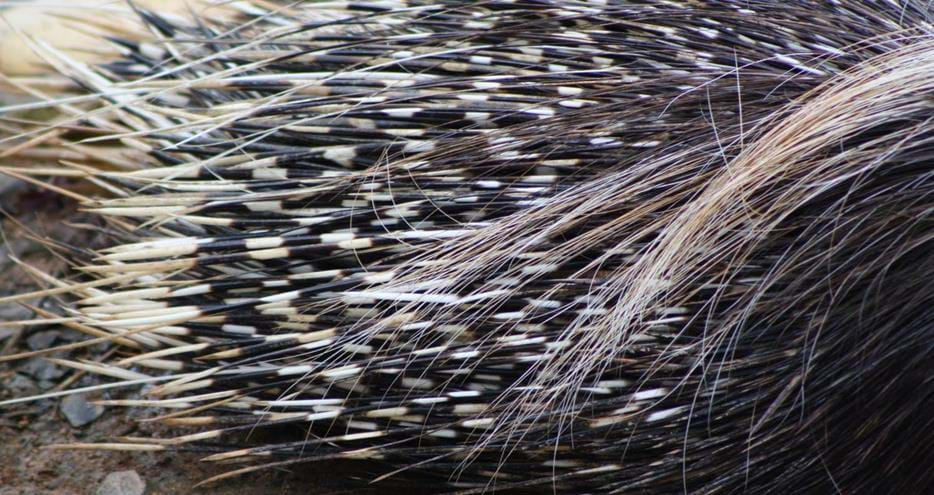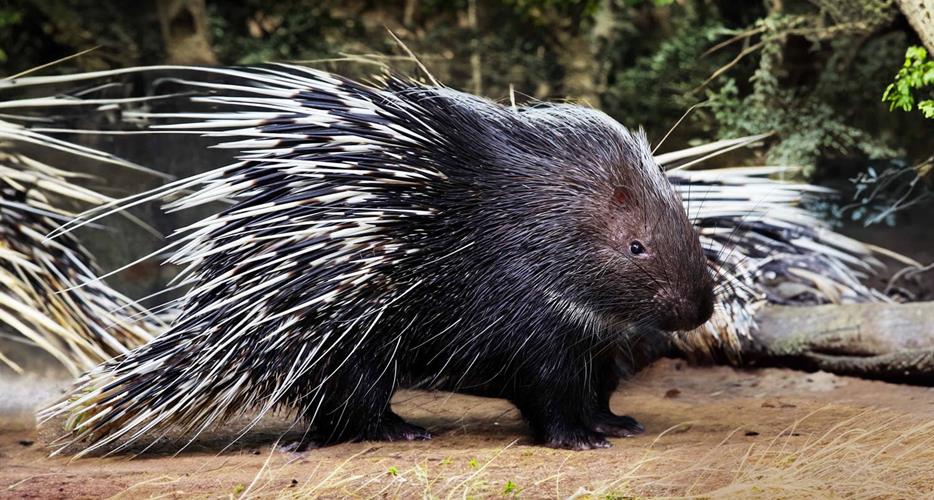Hystrix africaeaustralis
IUCN Status: Least concern
Visit us at: Port Lympne Hotel & Reserve
Cape Porcupines are part of the rodent family and the world’s largest porcupines but, unlike their larger cousin, the capybara, they are nocturnal and monogamous.
Want To Know More?
Their large incisors continue to grow throughout their lives so they need to wear them down with constant chewing.
Cape Porcupines have been known to even gnaw on bones, perhaps because of their need to continuously maintain their teeth.
Lifespan: 12 to 15 years in the wild, up to 21 years in captivity
Weight: 10 to 25kg
Size: 25 to 32” in body length
Diet: Mostly herbivore
Diet detail: Cape porcupines eat roots and even bulbs. Their meal of choice in the wild is the highly toxic (to humans) tamboti tree.
Did you know?: When threatened they change from mild-mannered to fierce, making a startling rattle sound and, using their quills, they attack; at speed, in reverse!
Threats to cape porcupines
The greatest threat faced by cape porcupines is human-animal conflict over agricultural resources. They are considered a pest in some farming areas.
Port Lympne Hotel & Reserve
Where to see our cape porcupine
Our cape porcupine lives at Port Lympne Hotel & Reserve, nr Ashford.






